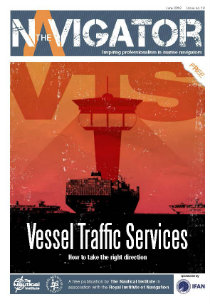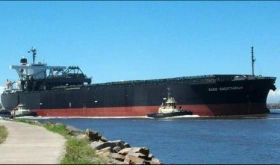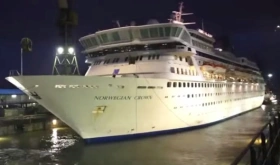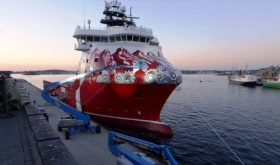Shipping losses continued their downward trend with 94 losses reported worldwide in 2013, coming in below 100 for only the second time in 12 years, according to Allianz Global Corporate & Specialty SE’s (AGCS) second annual Safety and Shipping Review 2014, which analyzes reported shipping losses of over 100 gross tons.
Losses declined by 20 percent from 2012 when there were 117 reported losses. The 2013 accident year also represents a significant improvement on the previous 10-year loss average with total worldwide shipping losses declining 45 percent since 2003.
More than 90 percent of global trade is carried by sea so the safety of international shipping vessels and routes is critical to the health of the global economy, on the other hand the long-term downward trend in shipping losses is encouraging, there is more work to be done to improve the overall safety of these vessels as well as their cargo, crew and passengers, especially in Asian waters.
Asia saw highest number of marine losses
According to the report, more than a third of 2013’s total losses were concentrated in two maritime regions. As in 2012, the South China, Indo China, Indonesia and the Philippines region saw the highest number of losses (18 ships), closely followed by the seas around Japan, Korea and North China (17 ships).
More than two years after the Costa Concordia disaster, improving passenger ship safety continues to be a priority, with 2014 likely to see the 100th loss of a passenger vessel since 2002. Asia remains a hotspot for passenger shipping losses, especially for smaller passenger vessels and ferries as demonstrated by the sinking of the ferry St. Thomas of Aquinas as a result of a collision with another vessel off Cebu in the Philippines in August 2013, with the loss of at least 116 lives.
Around the world, more than a third of the vessels lost were cargo ships with fishery and bulk carriers the only other type of vessels to record double-digit losses. The total loss of two bulk carriers in Asian waters in 2013, Harita Bauxite and Trans Summer, highlighted the importance of proper cargo handling and stowage of bulk cargoes. AGCS experts believe high moisture content and subsequent liquidization, leading to free flowing instabilization of the cargo to be the primary cause of the accidents.
The most common cause of losses in the past year was foundering (sinking or submerging), often driven by heavy weather, accounting for almost 75 percent of all losses, which was a significant increase from both 2012 (47 %) and the previous 10-year average (44 %).
For the first time the report includes not only total losses but also the total number of shipping casualties by region. The East Mediterranean and Black Sea region is shown to be a casualty hotspot, responsible for 464 casualties (18%) out of a worldwide total of 2,596 during 2013, including the year’s oldest ship to be a total loss: the 108 year old Hantallar which grounded off Tekirdag, Turkey. This region combines busy shipping routes and a reputation for weaker safety management practices with a regional fleet that has a higher proportion of lower quality older vessels The report also shows that over the past decade the British Isles have been the location of the most casualties, while January is the worst month for all casualties (including total losses) in the Northern Hemisphere. In the Southern Hemisphere it is July.
Piracy attacks still a concern
In 2013, piracy attacks declined 11 percent to 264 reported incidents worldwide according to International Maritime Bureau statistics – 106 of these occurred in Indonesia, which has seen a 700 percent increase in attacks since 2009. Most of these attacks remain low level opportunistic thefts carried out by small bands of individuals but one third of incidents in these waters were reported in the last quarter of 2013, and there is potential for such attacks to escalate into a more organized piracy model unless they are controlled.
An emerging piracy hotspot with more organized crime is the Gulf of Guinea with 48 incidents in 2013, accounting for 18 percent of all attacks worldwide. Piracy attacks in Somalia have declined dramatically with only seven incidents in 2013 compared with 160 attacks in 2011. The report suggests the piracy model could be broken in Somalia in a couple of years if naval patrols continue.
Emerging Risks
An increasingly difficult operating climate for ship operators has forced a number of innovations, including larger ship sizes to capitalize on economies of scale, the use of alternative fuels and changes in ship designs. At the same time, more economical trading routes are fast appearing in Arctic regions during the summer months, but these present their own set of challenges.
Emerging risks identified and detailed in the 2013 report include:
- Vessel size
- Rise of LNG-fueled vessels
- Arctic trading routes
Source: Safety and Shipping Review 2014














Leave a Comment